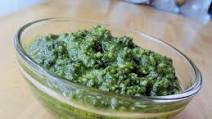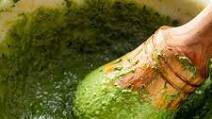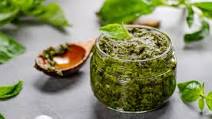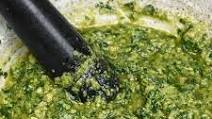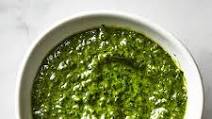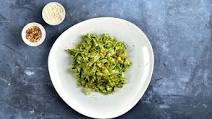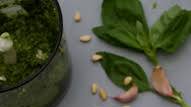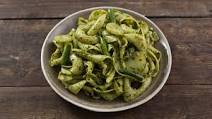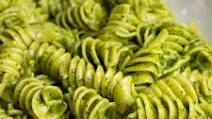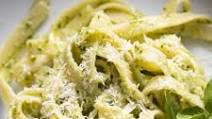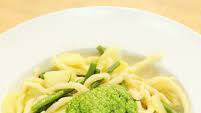What should I make for dinner tonight? This might just be the number one question that we ask ourselves almost daily over here.
Then you have come to the right place, we have rounded up 21 pesto genovese recipe that we have shared over the years.
Plus, there is such a variety of flavours in these recipes, so you are sure to find something for you. Most of these recipes are quick and easy ones made especially for busy weeknights.
21 Pesto Genovese Recipe
Pesto Genovese | Authentic Italian Basil Pesto
Pesto Genovese (Authentic Italian Basil Pesto)
Classic Basil Pesto (Pesto alla genovese)
Pesto alla Genovese
The Best Pesto alla Genovese (Classic Basil Pesto Sauce) Recipe
Homemade Basil Pesto (Pesto Alle Genovese)
Pesto Genovese (classic basil pesto)
Pesto Genovese
How to make Pesto alla Genovese
Pesto alla Genovese (Traditional Basil Pesto Recipe from Genoa)
Make your own Pesto, Basil Pesto alla Genovese, Recipe with Step by Step Photos and Chef´s Tips
Fettuccine al Pesto
Triofe Al Pesto Genovese
Pesto alla Genovese (Basil Pesto Recipe)
Pesto Genovese (Traditional Italian Pesto)
What is the difference between pesto and Pesto Genovese?
While traditional pesto alla Genovese typically includes non-vegetarian cheeses (including Parmigiano Reggiano and Pecorino Sardo), pesto by nature invites interpretation – feel free to substitute the traditional cheese for a vegetarian alternative.
What Is Genovese sauce made of?
Genovese sauce
| Genovese sauce with candele pasta served at the Villa Cimbrone in Ravello, Campania, Italy | |
|---|---|
| Type | Sauce |
| Main ingredients | Onion |
| Ingredients generally used | Beef, veal or pork |
| Cookbook: Genovese sauce | |
Where is pesto Genovese from?
Pesto Genovese is an uncooked cold sauce made only with 7 ingredients: Genovese basil DOP, extra virgin olive oil (Possibly of the Ligurian Riviera), Parmigiano Reggiano (or Grana Padano), Pecorino cheese (Fiore Sardo), pine nuts, garlic and salt. It was born in Liguria, a beautiful region situated in northern Italy.
How do you eat pesto alla Genovese?
In Liguria, pesto is usually eaten with trenette (a pasta shape similar to linguine) or trofie (short pasta made by rolling and twirling small pieces of dough by hand). However, I also love it with potato gnocchi. Traditionally, pasta with pesto alla Genovese is served with boiled potato cubes and green beans.
How healthy is pesto?
Because its ingredients include olive oil, nuts, and cheese, pesto can be high in calories and fat. However, the fat is primarily unsaturated and may have heart health benefits. Pesto is also full of antioxidants that can help protect your cells from damage.
Can you freeze pesto?
Store in airtight container in refrigerator for up to one week. Pesto freezes well. Freeze in ice cube trays, and then store frozen pesto cubes in plastic freezer bags in freezer for up to 6 months. Pesto may also be frozen in small jars or plastic containers for up to 9-12 months.
What is Genovese Herb?
Genovese basil is a variety of sweet basil that originated in Italy. Its vigorous, large leaves have a sweet, slightly spicy flavor. Genovese basil produces bright green, slightly crinkled leaves that can grow up to 3 inches (8 cm.) long.
What do Italians call pesto?
Pesto
| Basil pesto | |
|---|---|
| Alternative names | Pesto alla genovese |
| Place of origin | Italy |
| Region or state | Genoa |
| Main ingredients | Basil, garlic, olive oil, grated hard cheese, pine nuts |
What is the meaning of Genovese?
Genovese is an Italian surname meaning, properly, someone from Genoa. Its Italian plural form Genovesi has also developed into a surname.
Why is pesto popular in Italy?
Basil has been used for centuries in the Mediterranean, but it was the Genoese of Liguria who gave pesto to the world: a staple in the history of Italian cuisine. This is the sauce that comes to mind when one thinks of pesto. Just south of this famous port city is yet another pesto region that has made its mark.
How long does pesto last?
How Long Does Pesto Last? This easy basil pesto sauce will last up to 5 days in the refrigerator if stored in an airtight container. If you use the olive oil method shared above, the shelf life will be extended.
Why is it called pesto?
The name Pesto originates from the Genovese word pesto, which means to pound or to crush. This refers to the way in which the authentic sauce is prepared, with a mortar and pestle.

